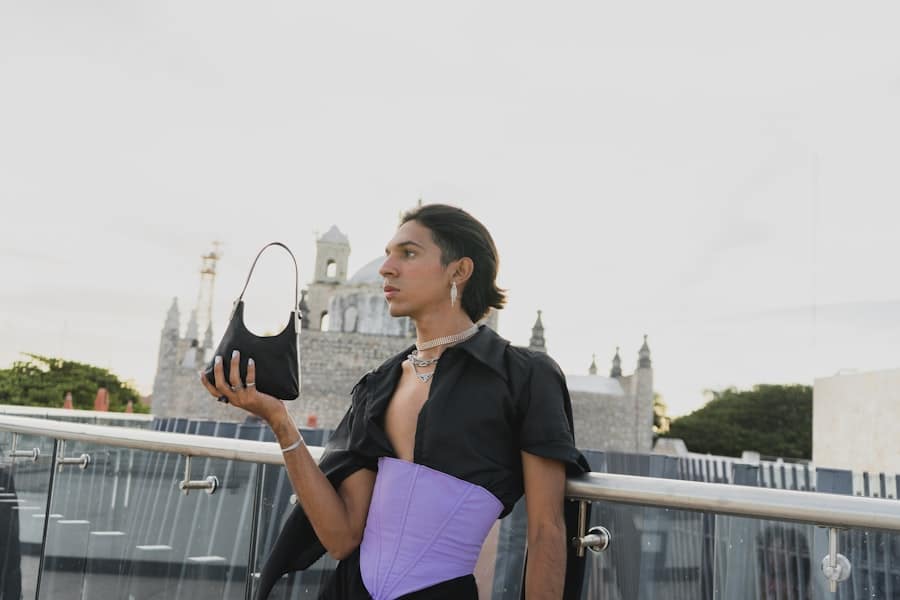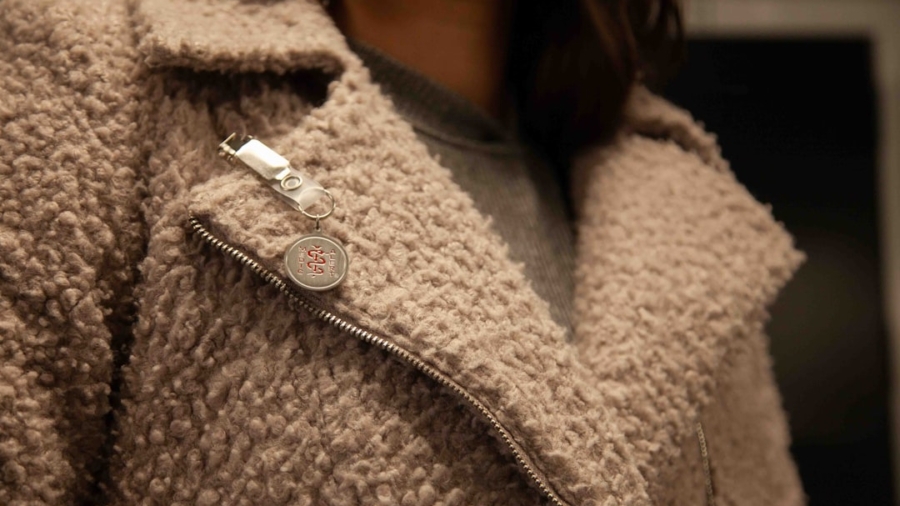The intersection of technology and fashion has given birth to a new category known as wearable fashion tech, which has rapidly gained traction over the past decade. This phenomenon is characterized by the integration of advanced technology into clothing and accessories, creating products that are not only stylish but also functional. The rise of wearable fashion tech can be attributed to several factors, including advancements in technology, the increasing demand for personalized experiences, and a growing awareness of health and wellness.
As consumers become more tech-savvy, they seek products that enhance their lifestyle while also making a fashion statement. One of the most notable examples of wearable fashion tech is the smartwatch, which has evolved from a simple timekeeping device into a multifunctional gadget that tracks fitness metrics, monitors health conditions, and even facilitates communication. Brands like Apple and Fitbit have led the charge in this space, offering sleek designs that appeal to fashion-conscious consumers.
Additionally, companies such as Google and Samsung have ventured into smart eyewear and clothing embedded with sensors, further blurring the lines between fashion and technology. This convergence has not only transformed how consumers interact with their devices but has also redefined the concept of personal style in the digital age.
Key Takeaways
- Wearable fashion tech has seen a significant rise in popularity, with consumers embracing the fusion of technology and fashion.
- The impact of wearable fashion tech on consumer behavior is evident, as it has led to increased interest in health and fitness tracking, as well as personalized and interactive shopping experiences.
- Influencers and celebrities play a crucial role in promoting wearable fashion tech, influencing consumer adoption and acceptance of these products.
- The evolution of wearable fashion tech in the fashion industry has led to the creation of innovative and stylish products that cater to consumer preferences and needs.
- Consumers are excited about new wearable fashion tech products, showing a growing interest in the integration of technology and fashion in their daily lives.
The Impact of Wearable Fashion Tech on Consumer Behavior
Wearable fashion tech has significantly altered consumer behavior by influencing purchasing decisions and lifestyle choices. As these products become more mainstream, consumers are increasingly drawn to items that offer both aesthetic appeal and practical functionality. The ability to track fitness goals, monitor health metrics, or receive notifications directly on a wristwatch has made wearables an essential part of many people’s daily routines.
This shift in behavior reflects a broader trend toward health consciousness and self-optimization, where individuals are motivated to invest in products that enhance their well-being. Moreover, the social aspect of wearable fashion tech cannot be overlooked. Many consumers are eager to showcase their latest gadgets as a form of self-expression.
The visibility of wearables in social settings—whether at the gym, during outdoor activities, or even in casual gatherings—has created a culture where owning the latest tech is synonymous with being trendy. This phenomenon is particularly evident among younger demographics who prioritize both functionality and style in their purchasing decisions. As a result, brands are increasingly focusing on design elements that appeal to this audience while ensuring that their products remain technologically advanced.
The Role of Influencers and Celebrities in Promoting Wearable Fashion Tech

Influencers and celebrities play a pivotal role in shaping consumer perceptions and driving the popularity of wearable fashion tech. Their ability to reach vast audiences through social media platforms has made them key players in marketing strategies for tech brands.
For instance, when celebrities like Gigi Hadid or David Beckham are seen sporting smartwatches or fitness trackers, it not only elevates the product’s status but also encourages fans to consider these items as essential components of their own wardrobes. The collaboration between fashion designers and tech companies has further amplified this trend. High-profile partnerships have resulted in limited-edition wearable tech pieces that blend cutting-edge technology with high-fashion aesthetics.
For example, the collaboration between luxury brand Louis Vuitton and tech giant Google produced a line of smart luggage equipped with tracking capabilities. Such partnerships not only enhance the appeal of wearable tech but also position it as a must-have accessory for style-conscious consumers. As influencers continue to showcase these products in their daily lives, they contribute to a growing acceptance of wearable fashion tech as an integral part of modern living.
The Evolution of Wearable Fashion Tech in the Fashion Industry
The evolution of wearable fashion tech within the fashion industry has been marked by innovation and creativity. Initially, wearables were primarily focused on functionality, often sacrificing style for practicality. However, as consumer expectations have shifted, designers have begun to prioritize aesthetics alongside technological advancements.
This evolution is evident in the emergence of smart textiles—fabrics embedded with sensors that can monitor body temperature, heart rate, or even muscle activity. These innovations have opened up new possibilities for designers to create garments that not only look good but also serve a purpose. Fashion shows have also embraced wearable tech as part of their presentations, showcasing garments that incorporate interactive elements or respond to environmental stimuli.
For instance, designers like Anouk Wipprecht have created dresses that change color based on the wearer’s mood or surroundings. Such innovations challenge traditional notions of fashion by introducing dynamic elements that engage consumers on multiple levels. As the industry continues to evolve, it is likely that we will see even more groundbreaking designs that seamlessly integrate technology into everyday wear.
Consumer Excitement for New Wearable Fashion Tech Products
Consumer excitement surrounding new wearable fashion tech products is palpable, driven by a combination of curiosity and anticipation for what the future holds. Each new release generates buzz within both tech and fashion communities, as enthusiasts eagerly await the latest innovations that promise to enhance their lifestyles. The unveiling of products at major tech expos or fashion weeks often leads to significant media coverage and social media chatter, creating a sense of urgency among consumers who want to be among the first to experience these advancements.
Moreover, limited-edition releases or collaborations between high-end designers and tech companies often create a frenzy among consumers who view these items as exclusive collectibles. The anticipation surrounding these launches is fueled by marketing campaigns that highlight unique features or cutting-edge designs, making them highly sought after. This excitement is not just about acquiring new gadgets; it reflects a deeper desire for connection and engagement with technology that resonates with personal identity and lifestyle choices.
The Integration of Technology and Fashion in Wearable Fashion Tech

The integration of technology and fashion in wearable fashion tech represents a paradigm shift in how consumers perceive both industries. No longer viewed as separate entities, technology and fashion are increasingly intertwined, leading to innovative products that cater to modern lifestyles. This integration is evident in various forms—from smart clothing that adjusts to temperature changes to accessories that provide real-time health monitoring.
As designers experiment with new materials and technologies, they are redefining what it means to wear fashion. One notable example is the development of smart fabrics that can change color or pattern based on user preferences or environmental conditions. These textiles not only offer aesthetic versatility but also challenge traditional notions of static clothing design.
Additionally, augmented reality (AR) applications are being integrated into fashion retail experiences, allowing consumers to virtually try on clothing or accessories before making a purchase. This fusion of technology enhances consumer engagement while providing a more personalized shopping experience.
Consumer Adoption and Acceptance of Wearable Fashion Tech
Consumer adoption and acceptance of wearable fashion tech have been influenced by several factors, including usability, design appeal, and perceived value.
The initial skepticism surrounding wearables has gradually diminished as brands have focused on creating devices that seamlessly integrate into existing routines without compromising style.
Furthermore, the growing emphasis on health and wellness has played a significant role in driving acceptance. Many consumers view wearable tech as essential tools for monitoring fitness levels or managing health conditions, leading to increased demand for products that offer these functionalities. As awareness around personal health continues to rise, so does the acceptance of wearables as valuable assets rather than mere gadgets.
This shift indicates a broader cultural change where technology is increasingly seen as an ally in achieving personal goals.
The Future of Wearable Fashion Tech and Its Potential Impact on Consumer Excitement
Looking ahead, the future of wearable fashion tech appears promising, with potential developments poised to further excite consumers. Innovations such as advanced biometric sensors capable of providing real-time health data or smart fabrics that adapt to user preferences are just a glimpse into what lies ahead. As technology continues to evolve at an unprecedented pace, it is likely that we will see even more sophisticated wearables that cater to specific needs while maintaining an emphasis on style.
Moreover, the potential for sustainability within wearable fashion tech cannot be overlooked. As consumers become increasingly conscious of environmental issues, there is a growing demand for eco-friendly materials and production methods in the fashion industry. Brands that successfully integrate sustainable practices into their wearable tech offerings may find themselves at the forefront of consumer excitement as they align with values that resonate with today’s conscientious shoppers.
In conclusion, the landscape of wearable fashion tech is rapidly evolving, driven by consumer demand for innovative products that blend style with functionality. As this sector continues to grow, it will undoubtedly shape not only how we interact with technology but also how we express ourselves through fashion in an increasingly digital world.
In the rapidly evolving world of wearable fashion tech, consumer excitement is reaching new heights as innovative designs and functionalities continue to emerge. A related article that delves into the broader landscape of technological advancements in marketing is What Are the Marketing Technologies for 2023?. This article explores the cutting-edge marketing technologies that are shaping consumer interactions and engagement in 2023, providing valuable insights into how these advancements can complement the growing trend of wearable fashion tech. By understanding the intersection of marketing technologies and wearable innovations, businesses can better cater to the tech-savvy consumer base eager for the latest in fashion and functionality.
FAQs
What is wearable fashion tech?
Wearable fashion tech refers to clothing and accessories that incorporate technology, such as smartwatches, fitness trackers, and smart clothing. These items are designed to be both functional and stylish, blending fashion with cutting-edge technology.
What are some examples of wearable fashion tech?
Examples of wearable fashion tech include smartwatches, fitness trackers, smart jewelry, and smart clothing. These items often feature built-in sensors, connectivity to smartphones, and other advanced technological capabilities.
How does wearable fashion tech enhance the consumer experience?
Wearable fashion tech enhances the consumer experience by providing functionality, convenience, and style. For example, smartwatches can track fitness metrics and provide notifications, while smart clothing can offer features such as temperature control and biometric monitoring.
What factors contribute to consumer excitement for wearable fashion tech?
Consumer excitement for wearable fashion tech is driven by factors such as the integration of technology into everyday items, the potential for personalization and customization, and the ability to stay connected and informed while on the go. Additionally, the fashion-forward design of these tech products also contributes to consumer excitement.
What are the potential challenges or concerns associated with wearable fashion tech?
Challenges and concerns associated with wearable fashion tech include issues related to privacy and data security, as well as the need for seamless integration with existing technology platforms. Additionally, some consumers may have concerns about the durability and longevity of these tech-infused fashion items.

